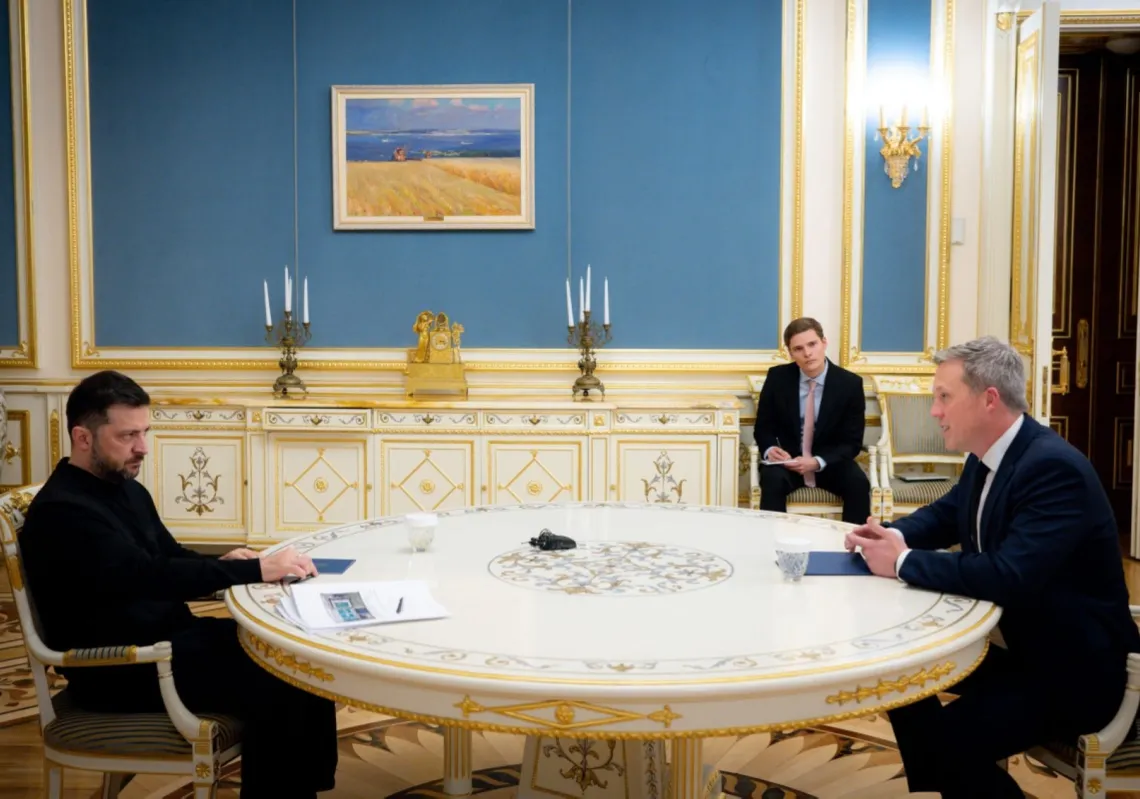While Saudi Arabia said it expected output to be restored in the near future, the size of the loss still sent shockwaves through the global energy markets. The attacks led to the biggest jump in global oil prices since 1988 by wiping out 5.7m barrels of production a day – 5 percent of the world’s oil supply. That’s more than half the kingdom’s overall output, and a higher rate than most countries—aside from the US and Russia—produce in total.
The price of Brent crude surged by more than $12 a barrel within seconds as trading began in London, quickly climbing to highs of $70.88 – a rise of more than 18 percent – before settling lower in a day of record-breaking oil trading.
Meanwhile, the energy price shock drove up shares in energy companies on the prospect of higher profits, while stock exchanges across Europe plunged into red as investors took fright over rising geopolitical tensions.
King Salman, who chaired a Cabinet session at Al-Salam Palace in Jeddah, said the attacks not only targeted vital installations of the Kingdom but also pose a threat to global oil supplies and threaten the stability of the global economy. Crown Prince Mohammed bin Salman, in a phone conversation with British Prime Minister Boris Johnson, said the attack is a dangerous escalation not only against Saudi Arabia, but also the world.
ABQAIQ’S STRATEGIC IMPORTANCE
Saudi Arabia’s Abqaiq governorate is located 75 kilometers South of Dammam. It covers an area of about 595 square kilometers is home to 70 thousand inhabitants. The governorate also houses the Abqaiq oil plant, arguably the world’s most strategically crucial one. Abqaiq plant is an integral part of Aramco’s daily oil production. Not only is it the world’s largest oil refinery, it is also world's largest crude oil concentration plant. According to Aramco, the plant processes 7 million barrels of oil a day. Aramco also manages four crude oil stations in Abqaiq, which, as of 31 December 2018, collectively store up to 66.4 million barrels of crude oil.
Abqaiq consists of three main plants, a crude oil plant, a liquefied gas plant and an auxiliary plant. The plant is also a hub of Arab light crude oil production, as 7 million barrels of light oil comes out of the plant on a daily basis. Additionally, the Abqaiq plant is the world's largest crude oil stabilization plant. Oil stabilization is the process by which sorting facilities send sour crude oil to oil plants, in this case Abqaiq, where it is processed and converted into sweet crude oil. In laymen’s terms oil sweetening is the process of removing hydrogen sulphide from oil (sweetened oil is favored since it is safer for tankers to ship). This processed oil is then transferred to Ras Tanura and Jubail on the east coast, then to Yanbu on the west coast. The Bahrain Petroleum Company (Bapco) also gets part of the oil. After that gas originating from semi-spherical tanks and concentration columns is sent to the liquefied natural gas facilities at Abqaiq for further processing.
The Abqaiq plant’s international importance extends beyond the security global oil supplies, as its pipeline ties Saudi Arabia’s Abqaiq facilities to Bapco’s refineries in Bahrain. Recently as much as 350 thousand barrels of crude oil a day are transferred to Bahrain via this 110 kilometer pipeline. A new pipeline has been installed between both facilities to accommodate Bahrain’s increased need for oil. The older pipeline built in 1945 could only send 220 thousand barrels of oil to Bahrain, this proved to be insufficient given the increased processing capacity of the Sitra refinery of 267 thousand barrels per day. As a result, the new pipeline was set up in the south of Dhahran, Saudi Arabia passing through the shores of Al Jazair in the south of Bahrain.
The plant’s most crucial pipeline is its East-West Pipeline, aka the Petroline. The Petroline consists of two parallel pipelines which connect the Abqaiq plant on the Eastern Province of Saudi Arabia to the west coast of the Kingdom. In 2018, Aramco stated that 2.1 million barrels of crude oil moves through the Petroline. It also predicted that by the year 2023, crude oil transfers through the pipelines will increase from 5 million barrels a day to 6.5 million barrels a day. Because of these factors, the security of the Petroline, as well as the Abqaiq plant as a whole, is a top priority for Saudi Arabia.

AN INOPPORTUNE TIME FOR THE GLOBAL ECONOMY
Economists fear weeks, or possibly months of disruption which could do significant damage globally by tipping the stumbling global economy into a major recession by stemming supply to Asian economies if the Saudi can’t get the Abqaiq facility back online soon and the resulting oil in prices lasts more than a few months – or if tensions between the US and Iran escalate. Oil market analysts claim prices could surge towards $100 a barrel in the coming weeks if Middle East tensions reignite disruption in the strait of Hormuz, a key transit route for the world’s oil tankers.
A lot is riding on how long the oil disruption to Saudi oil production lasts – and the extent to which the gap can be filled by stepping up production or drawing down inventories elsewhere. Bjørnar Tonhaugen, the head of oil markets at Rystad Energy, said the world was “not even close” to being able to replace Saudi exports.
Some countries are more exposed than others, and the rising geopolitical tensions resulting from the attack will add to the uncertainties which are already weighing on business investment around the world.
Holger Schmieding, an economist at Berenberg, told the Financial Times that an increase of €10 per barrel generally adds 0.3 percentage points to eurozone consumer price inflation within two months, with a similar effect on consumers’ disposable income. “For countries that are hovering on the brink of recession already, this could make the difference between stagnation or a mild contraction,” he said, pointing to Germany and Italy.
The biggest losers would be large oil-importing emerging economies such as Turkey and Argentina – already in a highly fragile state, and ill-equipped to deal with even a temporary rise in inflation, according to the Financial Times.
Jennifer McKeown from the consultancy Capital Economics also cautioned that if prices were driven higher by an escalation in Middle Eastern tensions, “benefits for some oil producers would have to be set against the severe costs of conflict for other,” she told the Financial Times. Even without a big regional flare-up, the heightened risks of conflict would “add to a host of reasons to feel uncertain about the global outlook” that are already weighing on business confidence and holding back investment across advanced economies, she said.
Despite the fact that the US is now the world’s largest oil producer, it still imports significant quantities of oil. Samatha Gross, Fellow in the Cross-Brookings Initiative on Energy and Climate, said that from an energy security perspective, the Trump administration has been telling us that the United States is now “energy dominant” and that we no longer need Middle East oil, but that “this incident shows how important the region still is to global oil markets, and in turn the United States.” She added that Saudi Arabia is still the indispensable country in oil markets, owing to its large exports and ability to use spare capacity to move prices.
SAUDI RESILIENCE
The export-reliant Saudi economy depends on profits from oil sales worth some 23 percent of its GDP, according to World Bank figures. And although the damaged facilities are central to Saudi ability to export crude oil, they have significant excess capacity and were not destroyed, so the Saudis may be able to restore exports relatively quickly.
The Kingdom said on Wednesday that the attack had no impact on government revenues and authorities were gearing up to list the state oil giant, Aramco, signalling the kingdom’s resilience following the crippling strike on its oil industry. “In terms of revenues there’s zero impact,” Saudi Finance Minister Mohammed al-Jadaan told Reuters in an interview on the sidelines of an investor conference in Riyadh. “Aramco continued to supply the markets without interruption and therefore revenues should continue as they are.”
He spoke a day after Energy Minister Prince Abdulaziz bin Salman said the kingdom will restore lost oil output by the end of September and has managed to restore supplies to customers to the levels they were at prior to the attacks. Oil prices fell after the Saudi reassurances.
The giant oil producer has accelerated preparations for a share sale that could happen as November in Riyadh. Dozens of bankers from Citigroup Inc. to JPMorgan Chase & Co. met last week to work on the deal, with analyst presentations scheduled for September 22, people familiar with the matter have said.
Doubts had emerged earlier this week about the timeline of the IPO in the wake of the attack, but despite the concerns, Aramco has pressed ahead with banker meetings this week. Bankers at an investor conference in Riyadh, speaking to Reuters on condition of anonymity, said the planned IPO of the state oil giant would go ahead despite the attacks. “There will be a patriotic buy into the company from both the wealthy and the less wealthy Saudis,” John Sfakianakis, chief economist at Gulf Research Center, told Reuters this week.
Sources previously told Reuters Aramco was targeting a domestic listing as early as November, but Aramco’s chairman, Yassir al-Rumayyan, said on Tuesday the IPO would be ready within the coming 12 months.
The Aramco IPO is a pillar of an ambitious economic diversification drive by Crown Prince Mohammed bin Salman, who has put the firm’s valuation at $2 trillion. The domestic flotation is the first step of a targeted 5 percent sales.









